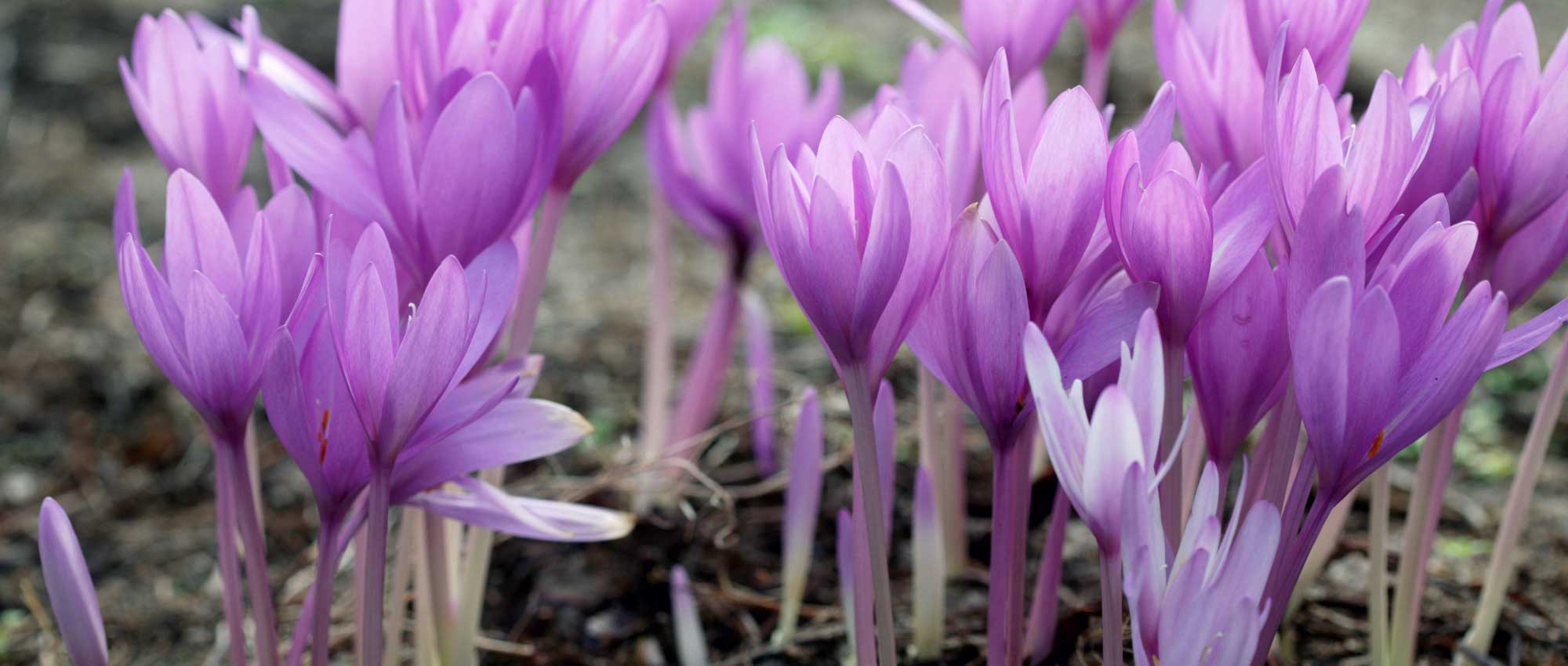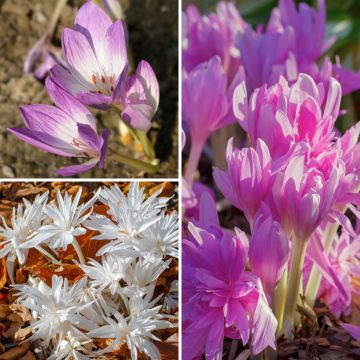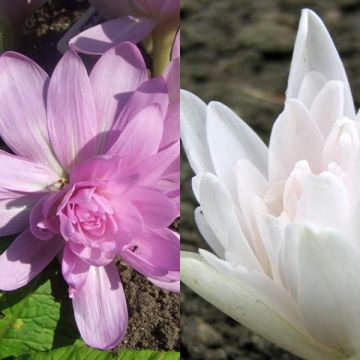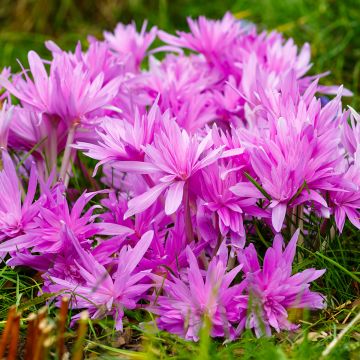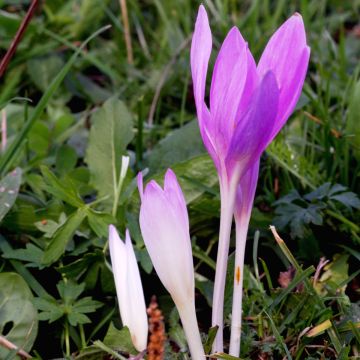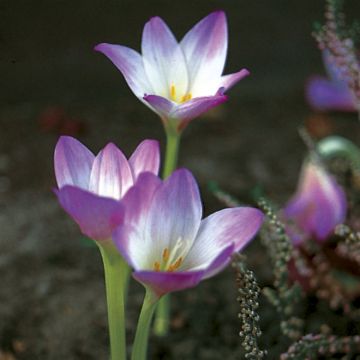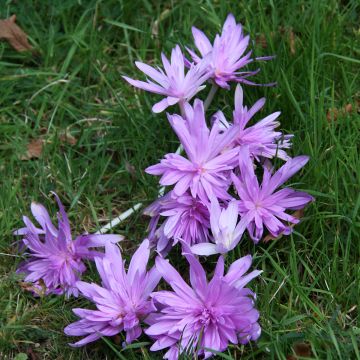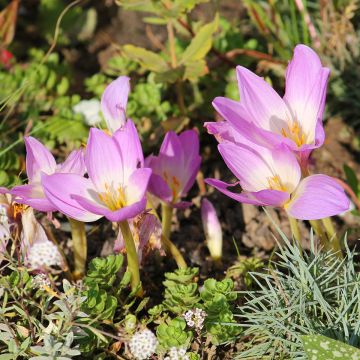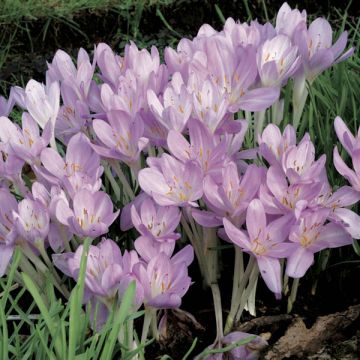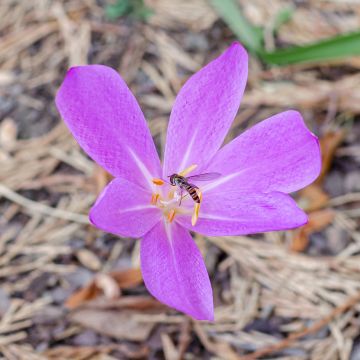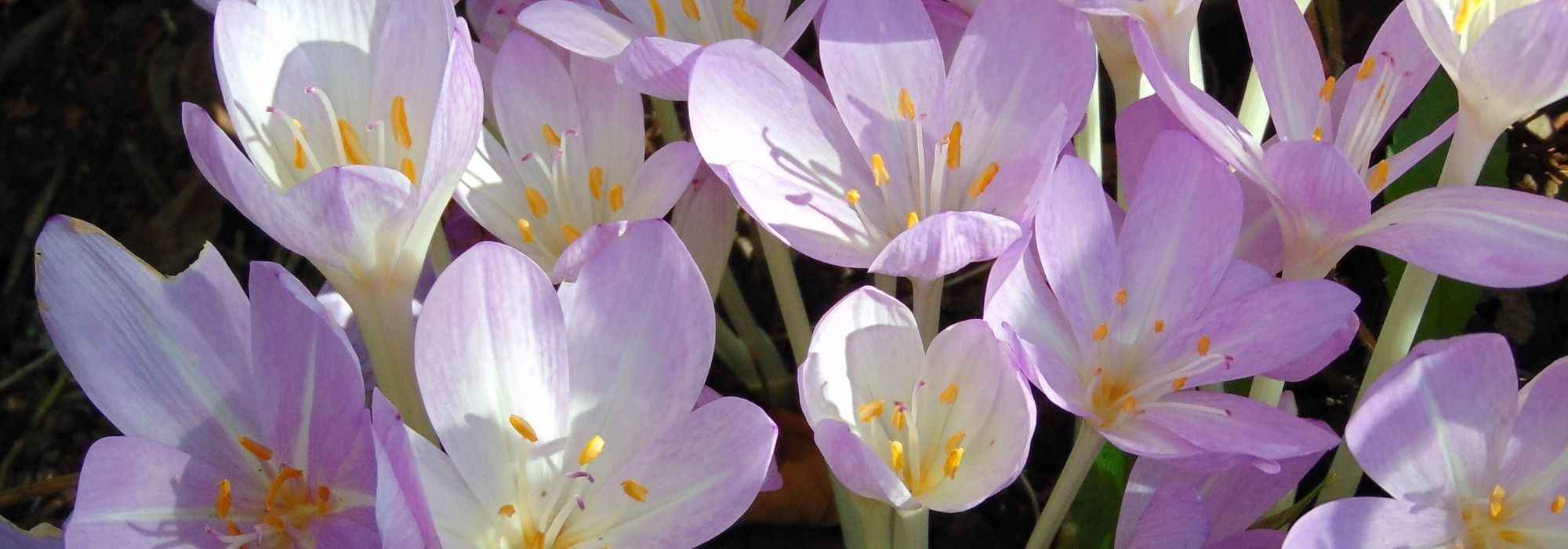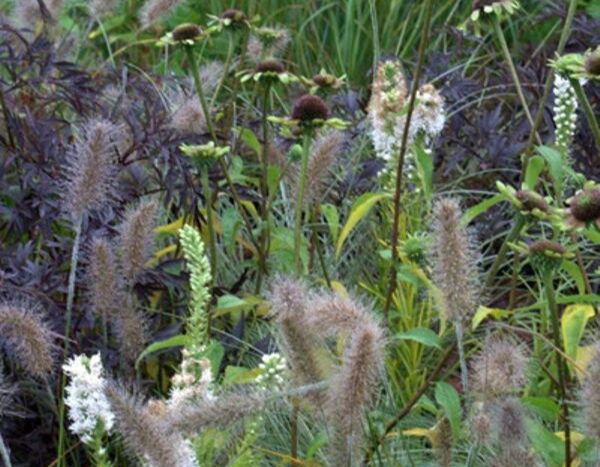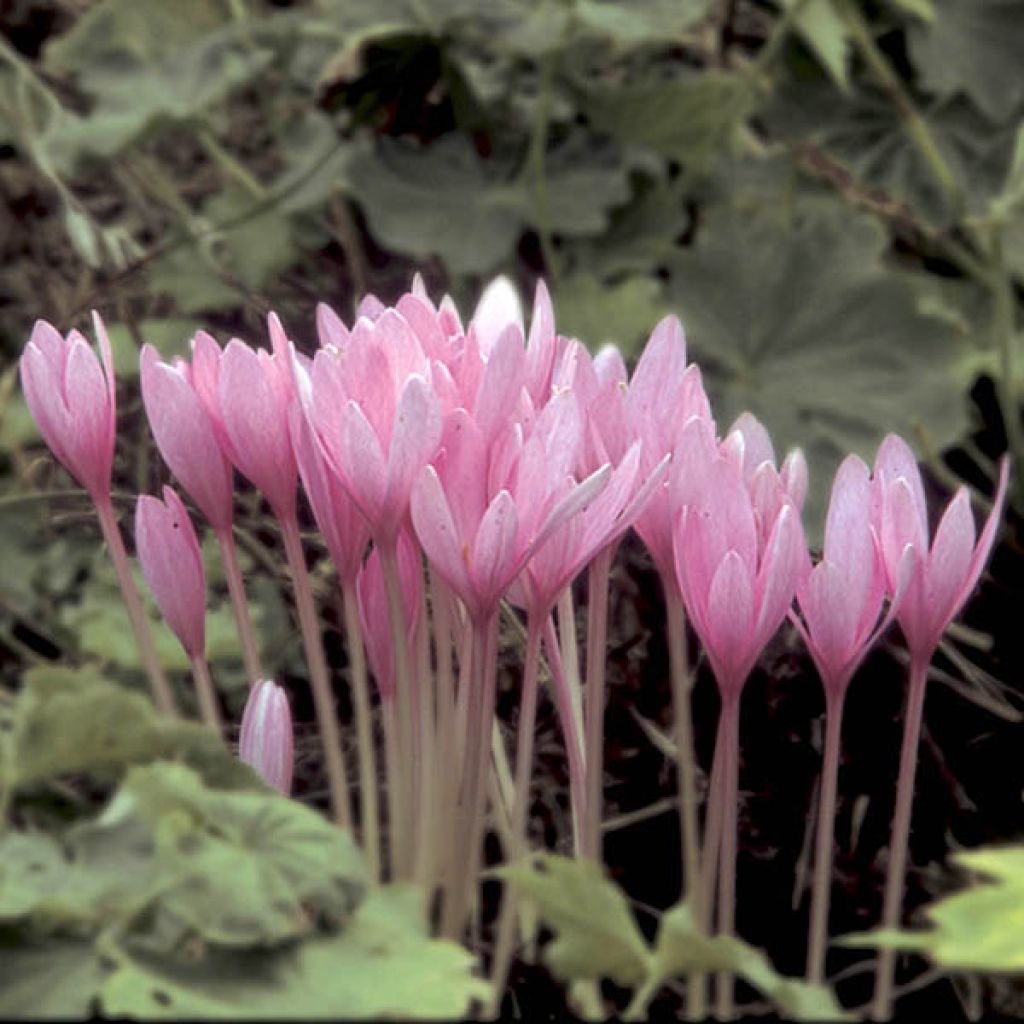

Colchicum Autumnale Major - Autumn crocus
View more pictures
Hide images

Claudine F.

Claudine F. • 92 FR
Colchicum Autumnale Major - Autumn crocus
Colchicum autumnale Major
Meadow Saffron, Autumn Crocus
On October 24th, I received 3 bulbs of very nice size. I hope they will take well and thrive.
Sarazin 30, 11/01/2025
Special offer!
Receive a €20 voucher for any order over €90 (excluding delivery costs, credit notes, and plastic-free options)!
1- Add your favorite plants to your cart.
2- Once you have reached €90, confirm your order (you can even choose the delivery date!).
3- As soon as your order is shipped, you will receive an email containing your voucher code, valid for 3 months (90 days).
Your voucher is unique and can only be used once, for any order with a minimum value of €20, excluding delivery costs.
Can be combined with other current offers, non-divisible and non-refundable.
This plant carries a 6 months recovery warranty
More information
We guarantee the quality of our plants for a full growing cycle, and will replace at our expense any plant that fails to recover under normal climatic and planting conditions.

Would this plant suit my garden?
Set up your Plantfit profile →
Description
Colchicum Autumnale Major, also known as Colchicum Byzantinum, is a vigorous perennial plant, probably of hybrid origin. It is one of the earliest autumn crocuses, blooming as early as September. Each large 'bulb' gives rise to fifteen to twenty flowers in the shape of long cups, with a soft pink-lilac colour, marked by a white centre and a few white veins. These flowers are not affected by bad weather. This highly sought-after form is capable of flowering 'above ground', without water, on a windowsill for example. Its cultivation is not difficult, but it requires well-drained soil and a sunny location.
Colchicum Autumnale Major is a geophyte plant with a corm from the Liliaceae family, and one of the 45 spontaneous species or hybrids found in this genus native to North Africa, Europe, and Western and Central Asia. It was long believed that this plant originated from southeastern Europe, but recent research concludes that Colchicum Major has a hybrid origin, probably resulting from cross-breeding between C. autumnale, our European crocus, and C. cilicicum, native to southern Turkey and Syria. In fact, this crocus is sterile. The bulb, actually a corm, is particularly large: it reaches a length of 5 to 10 cm with a diameter almost similar. At maturity, the plant reaches a height of 12 cm. Its flowering is very early. Its tulip-shaped flowers can measure up to 10 cm long and have short purple stigmas. In spring it develops large, dark green, shiny, curiously channelled, upright leaves that can reach 25 to 30 cm long. They disappear at the end of spring or early summer when the plant goes into dormancy. The crocus is classified as a nudiflorum plant, meaning that the flowers develop before the leaves.
Colchicum Autumnale Major is a somewhat nostalgic wild plant that heralds the arrival of autumn but also often celebrates the advent of a beautiful late season, as September is one of the most beautiful months of the year in the garden, in all regions. It can be used in rock gardens, in light woodlands, but also in lawns alongside crocuses and muscari, in ephemeral pots, but also in autumn bouquets. Its presumed parent, Colchicum cilicicum, widespread in Syria and southern Turkey on Mount Taurus, has bequeathed it a resistance to summer drought superior to that of our native crocus. It thrives better in montane climates with distinct winters but is not afraid of fairly dry soils in summer. It naturalises easily in rock gardens and in any well-drained soil. All parts of the crocus are toxic.
Colchicum Autumnale Major - Autumn crocus in pictures
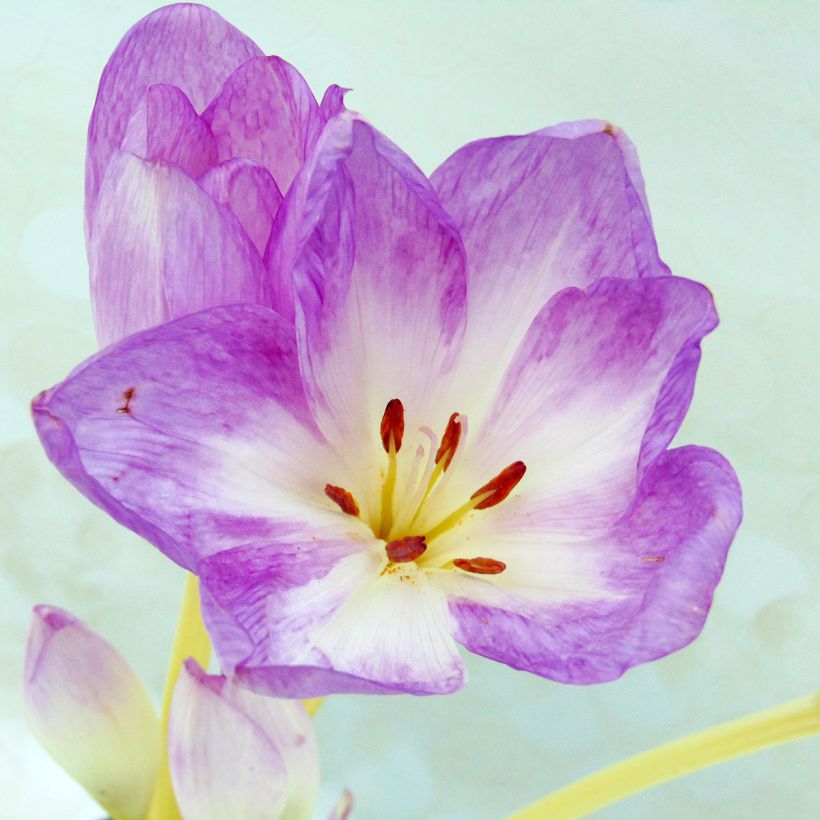

Plant habit
Flowering
Foliage
Safety measures
Botanical data
Colchicum
autumnale
Major
Liliaceae
Meadow Saffron, Autumn Crocus
Western Europe
ingestion
Cette plante est toxique si elle est ingérée volontairement ou involontairement.
Ne la plantez pas là où de jeunes enfants peuvent évoluer, et lavez-vous les mains après l'avoir manipulée.
Pensez à conserver l'étiquette de la plante, à la photographier ou à noter son nom, afin de faciliter le travail des professionnels de santé.
Davantage d'informations sur https://plantes-risque.info
Other Colchicum
View all →Planting and care
Plant Colchicum Autumnale Major in full sun in deep (15 cm), fertile and well-drained but not too dry soil. Space them 10 to 15 cm apart, they will establish quickly. Plant colchicums in July-August so that they can flower in the first year of planting. After planting, leave them in place as they do not like to be disturbed. Colchicums will flower during the month of September. After flowering, they go dormant until spring and their leaves will bloom in May and completely disappear in June.
Planting period
Intended location
Care
Planting & care advice
-
, onOrder confirmed
Reply from on Promesse de fleurs
Haven't found what you were looking for?
Hardiness is the lowest winter temperature a plant can endure without suffering serious damage or even dying. However, hardiness is affected by location (a sheltered area, such as a patio), protection (winter cover) and soil type (hardiness is improved by well-drained soil).

Photo Sharing Terms & Conditions
In order to encourage gardeners to interact and share their experiences, Promesse de fleurs offers various media enabling content to be uploaded onto its Site - in particular via the ‘Photo sharing’ module.
The User agrees to refrain from:
- Posting any content that is illegal, prejudicial, insulting, racist, inciteful to hatred, revisionist, contrary to public decency, that infringes on privacy or on the privacy rights of third parties, in particular the publicity rights of persons and goods, intellectual property rights, or the right to privacy.
- Submitting content on behalf of a third party;
- Impersonate the identity of a third party and/or publish any personal information about a third party;
In general, the User undertakes to refrain from any unethical behaviour.
All Content (in particular text, comments, files, images, photos, videos, creative works, etc.), which may be subject to property or intellectual property rights, image or other private rights, shall remain the property of the User, subject to the limited rights granted by the terms of the licence granted by Promesse de fleurs as stated below. Users are at liberty to publish or not to publish such Content on the Site, notably via the ‘Photo Sharing’ facility, and accept that this Content shall be made public and freely accessible, notably on the Internet.
Users further acknowledge, undertake to have ,and guarantee that they hold all necessary rights and permissions to publish such material on the Site, in particular with regard to the legislation in force pertaining to any privacy, property, intellectual property, image, or contractual rights, or rights of any other nature. By publishing such Content on the Site, Users acknowledge accepting full liability as publishers of the Content within the meaning of the law, and grant Promesse de fleurs, free of charge, an inclusive, worldwide licence for the said Content for the entire duration of its publication, including all reproduction, representation, up/downloading, displaying, performing, transmission, and storage rights.
Users also grant permission for their name to be linked to the Content and accept that this link may not always be made available.
By engaging in posting material, Users consent to their Content becoming automatically accessible on the Internet, in particular on other sites and/or blogs and/or web pages of the Promesse de fleurs site, including in particular social pages and the Promesse de fleurs catalogue.
Users may secure the removal of entrusted content free of charge by issuing a simple request via our contact form.
The flowering period indicated on our website applies to countries and regions located in USDA zone 8 (France, the United Kingdom, Ireland, the Netherlands, etc.)
It will vary according to where you live:
- In zones 9 to 10 (Italy, Spain, Greece, etc.), flowering will occur about 2 to 4 weeks earlier.
- In zones 6 to 7 (Germany, Poland, Slovenia, and lower mountainous regions), flowering will be delayed by 2 to 3 weeks.
- In zone 5 (Central Europe, Scandinavia), blooming will be delayed by 3 to 5 weeks.
In temperate climates, pruning of spring-flowering shrubs (forsythia, spireas, etc.) should be done just after flowering.
Pruning of summer-flowering shrubs (Indian Lilac, Perovskia, etc.) can be done in winter or spring.
In cold regions as well as with frost-sensitive plants, avoid pruning too early when severe frosts may still occur.
The planting period indicated on our website applies to countries and regions located in USDA zone 8 (France, United Kingdom, Ireland, Netherlands).
It will vary according to where you live:
- In Mediterranean zones (Marseille, Madrid, Milan, etc.), autumn and winter are the best planting periods.
- In continental zones (Strasbourg, Munich, Vienna, etc.), delay planting by 2 to 3 weeks in spring and bring it forward by 2 to 4 weeks in autumn.
- In mountainous regions (the Alps, Pyrenees, Carpathians, etc.), it is best to plant in late spring (May-June) or late summer (August-September).
The harvesting period indicated on our website applies to countries and regions in USDA zone 8 (France, England, Ireland, the Netherlands).
In colder areas (Scandinavia, Poland, Austria...) fruit and vegetable harvests are likely to be delayed by 3-4 weeks.
In warmer areas (Italy, Spain, Greece, etc.), harvesting will probably take place earlier, depending on weather conditions.
The sowing periods indicated on our website apply to countries and regions within USDA Zone 8 (France, UK, Ireland, Netherlands).
In colder areas (Scandinavia, Poland, Austria...), delay any outdoor sowing by 3-4 weeks, or sow under glass.
In warmer climes (Italy, Spain, Greece, etc.), bring outdoor sowing forward by a few weeks.






























